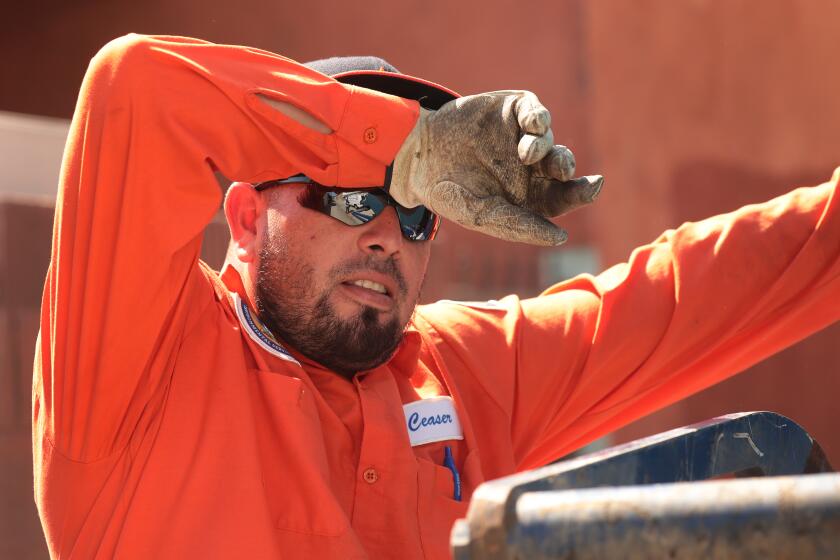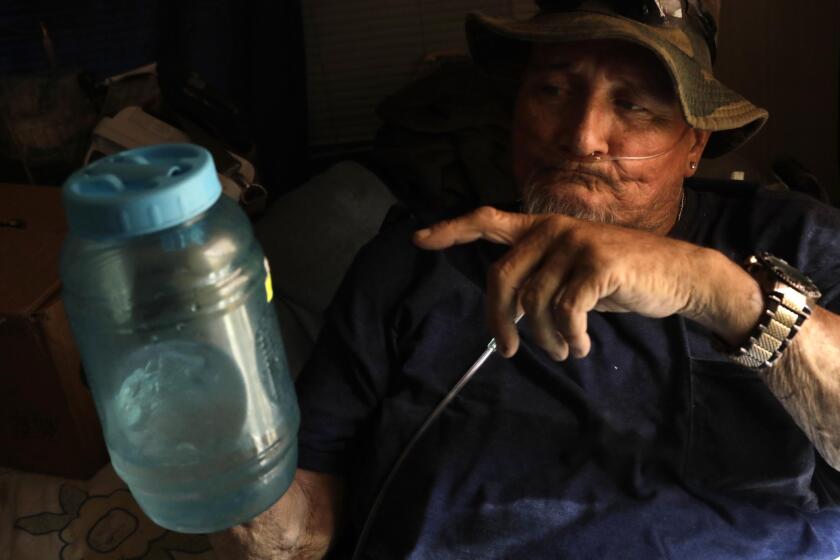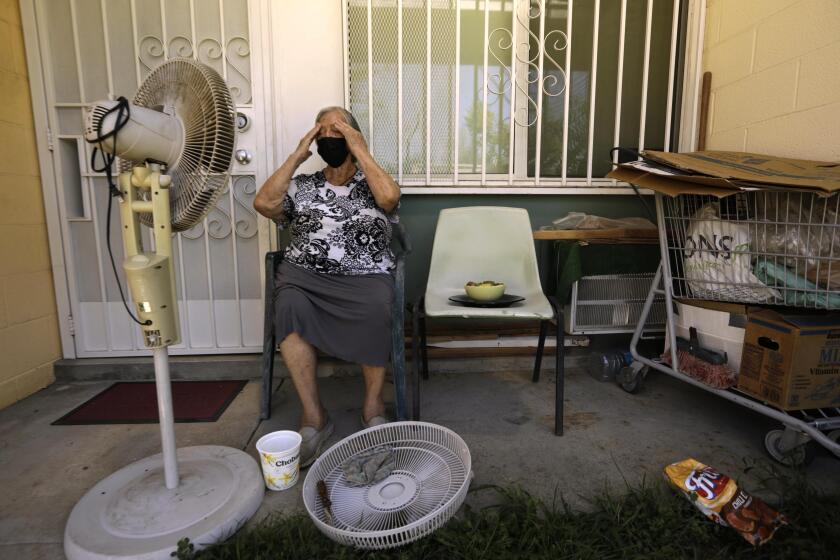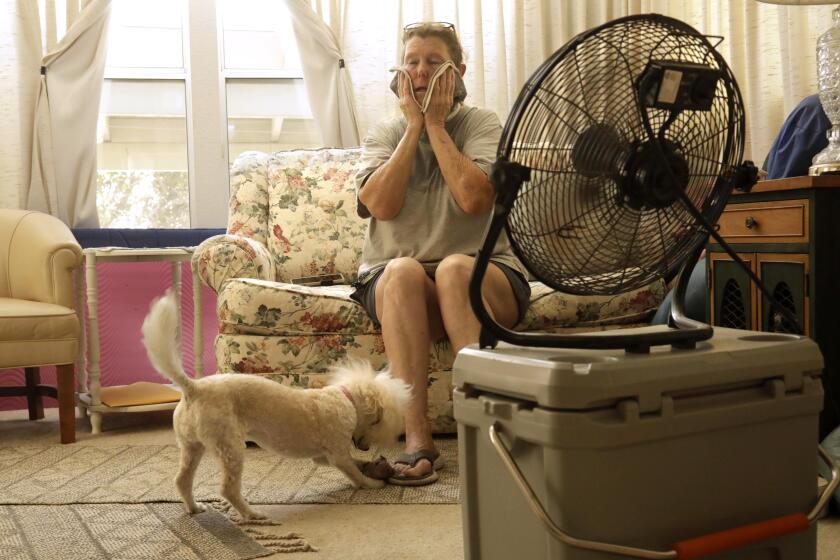Despite promises, California doesn’t know how many people died in record summer heat wave
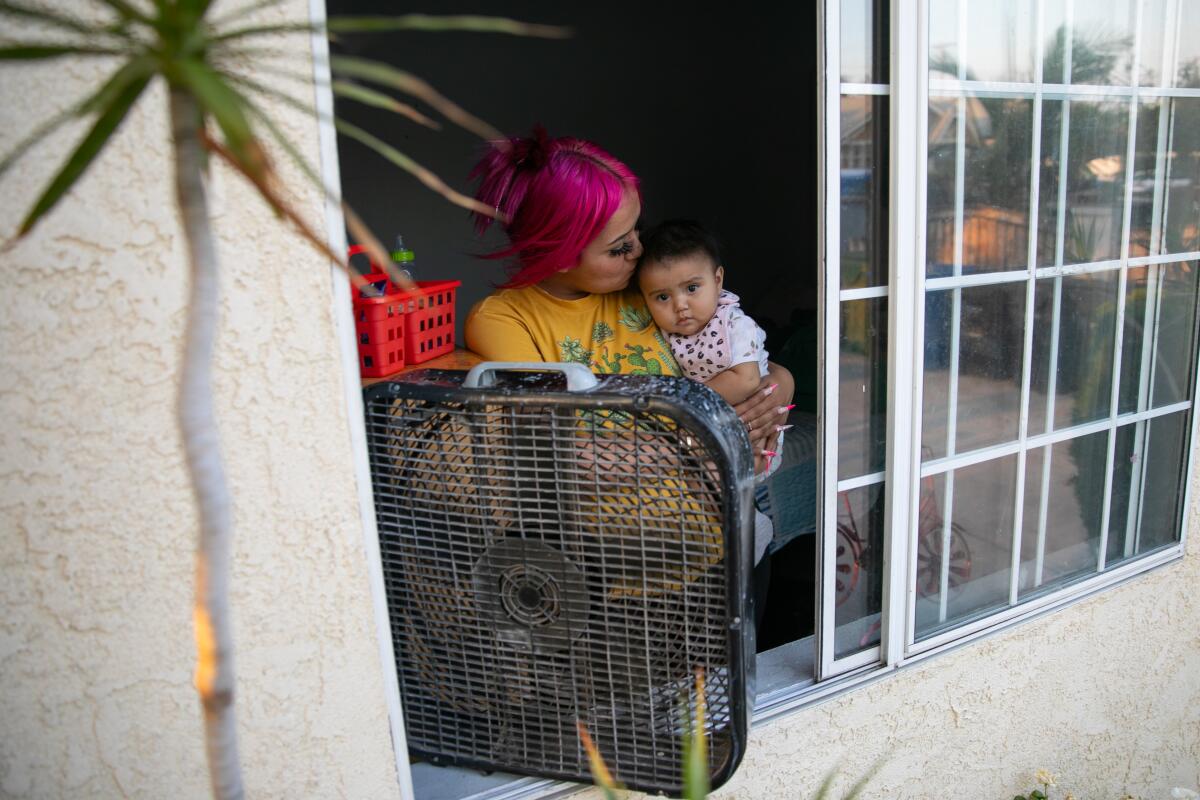
It was the worst California heat wave ever recorded in September — an epic grilling that disabled one of Twitter’s main data centers, pushed the power grid to its limit and triggered a succession of weather and safety alerts.
For 10 grueling days, meteorologists tracked record-setting temperatures as they boiled across the state — 116 degrees in Sacramento, 114 in Napa, 109 in Long Beach. But for all the data on soaring temperatures, there was little information on the heat wave’s human toll, or how many people had been sickened or even killed.
The state’s ongoing struggle to account for heat wave illnesses and deaths — despite promises to improve monitoring — has frustrated some public health experts who say the lack of timely information puts lives in jeopardy.
“We’re not respecting the most important natural disaster that we do get,” said David Eisenman, co-director of the UCLA Center for Public Health and Disasters. “We’re not really giving it the attention it deserves, and the state releasing data is not some abstract thing — people need to know how harmful it was if they’re going to start to respect it.”
Record temperatures. Hot nights. Broiling beaches. Why this California heat wave was so extreme.
Last year, a Times investigation found that California has chronically underestimated heat fatalities even as heat waves become more frequent and more deadly. Although the Legislature recently agreed to the creation of what is known as a syndromic surveillance system, which will collect real-time data from emergency departments, it remains unclear when such a network will become operational statewide.
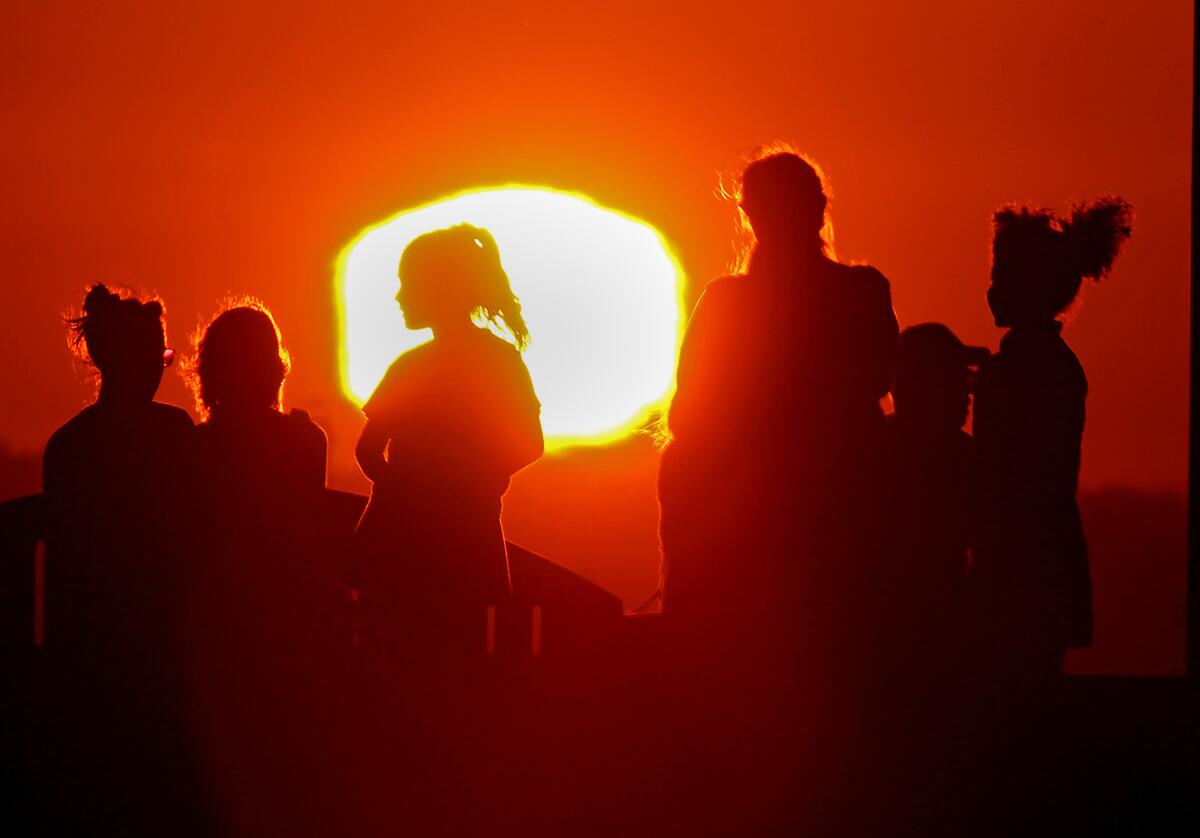
Currently, the California Department of Public Health said it tracks heat-related illnesses and deaths “using data sets that are available at approximately a 6- to 18-month lag time,” due in part to how long it takes to certify deaths as being heat-related. As a result, it was unable to provide any numbers for illnesses or deaths due to the recent heat wave.
The department also said it was “still assessing the landscape for the implementation of statewide syndromic surveillance” and did not yet have a time frame for when that system would be online.
Los Angeles-area officials were able to provide only slightly more information than the state.
In response to a public records request, the L.A. County Department of Health Services, which operates county hospitals and the Emergency Medical Services agency, said fire departments responded to 146 calls classified as “heat” — defined by the agency as environmental hyperthermia — during the 10-day period of Aug. 31 to Sept. 9. There were only 10 such calls in the prior 10-day period.
The county’s Department of Public Health also reported a sevenfold increase in the percentage of emergency department encounters classified as heat-related illnesses during Labor Day weekend, Sept. 3-5, compared with the entire month of August. It said the estimate should be viewed with caution, however, because it was based on a small number of heat-related illness reports — only 81 out of more than 9,100 emergency department encounters on the peak temperature day of Sept. 4.
For its part, the L.A. County coroner’s office ran a query into heat-related deaths during the peak heat days of Aug. 31 to Sept. 5 and said it “did not come up with any.”
Read all of our coverage about how California is neglecting the climate threat posed by extreme heat.
While it is possible that there was minimal death and illness caused by the heat wave, it’s unlikely, Eisenman said. His own team’s analysis predicts that there are at least eight extra deaths per day in Los Angeles County during extreme heat events, with that number increasing to 10 or more as heat waves wear on.
“This was a long one and it was pretty severe, and we haven’t done enough in Los Angeles or California to have prevented deaths, to have mitigated the harms,” he said. “We have no reason to think that we’re avoiding death with something that is known to cause the most amount of harm of all weather events.”
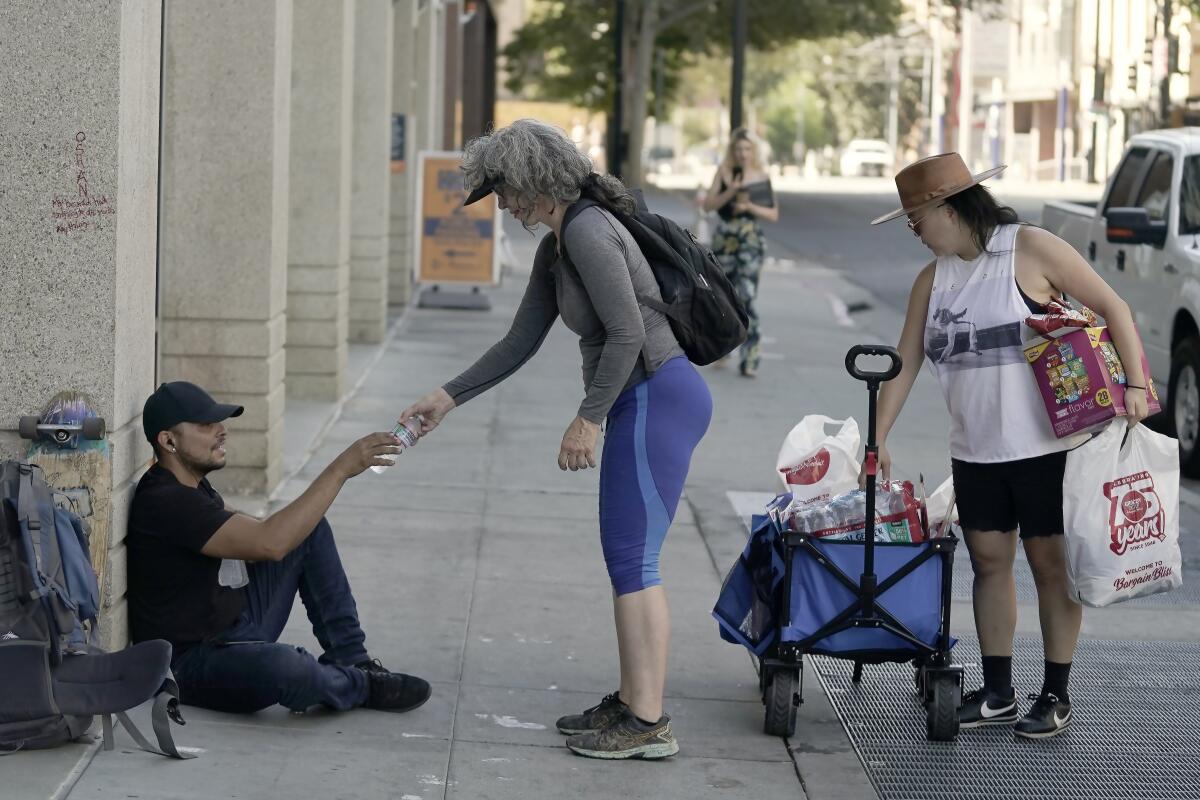
Unlike other natural disasters such as hurricanes, extreme heat “comes and goes invisibly,” Eisenman said. That can make it difficult to adequately communicate its dangers. But extreme heat events are also increasing in severity and length in California, and it is critical for people to understand the threat.
He noted that after the brutal Pacific Northwest heat wave of 2021, officials in Oregon, Washington and the Canadian province of British Columbia reported information on heat-related illnesses and deaths within days — which was not the case in California after the heat wave last month. What’s more, health departments in the state have been releasing COVID-19 data daily during the pandemic, so they do have the capability to track information in real time.
Among those most vulnerable to extreme heat are children, the elderly, homeless people and pregnant women. Farmworkers, construction workers and factory workers are also at risk, as are people with underlying health conditions such as kidney disease and diabetes, which can make their bodies less able to handle dehydration and heat, Eisenman said.
Part of the difficulty in tabulating heat deaths, according to state and local health officials, is that “heat” is not coded on death certificates. Because of this, a person who dies from a heart attack while suffering from heat-related illness, for example, may be recorded as dying from the heart attack.
Under such circumstances, the only way to determine the number of heat fatalities during a given heat wave would be to perform an “excess deaths” analysis, in which the number of deaths that occurred during a heat event is compared with the number of deaths that occur under normal conditions. However, such an analysis requires a sufficient amount of time to have elapsed since the heat wave — “at least several months,” the Los Angeles County Department of Public Health said.
A new UCLA mapping tool alerts Los Angeles County residents of extreme-heat danger in their neighborhoods.
The department does have its own syndromic surveillance system, but said it would not release that data publicly because the system collects only limited information on patients’ complaints during emergency department visits. As a result, “there can be significant underreporting and misclassification of health conditions,” it said.
Jonathan Parfrey, executive director of the group Climate Resolve, said that he could understand why the county would not want to release imperfect data, but that not doing so was a mistake.
“They’re missing the forest for the trees,” he said. “There is the big-picture reality — there are many more hospitalizations and emergency room visits and incidents of deaths during heat events, and the public doesn’t know this. And so if it’s off by 5% or 10%, that’s not the point. The point is that there is a significant impact on public health during extreme heat events.”
Paul English, director of Tracking California for the Public Health Institute, agreed. He said officials must conduct such an analysis for the last heat wave.
“Did the state do enough? Well, we need to get the data,” English said. “Are they going to look at the excess mortality and morbidity and get the true picture of how people were affected? They just need to run that analysis, and I hope they do it, and publicize it so we know the full impact.”
California needs to start treating extreme heat like the public health hazard it is.
While California is still struggling with data on heat illnesses and death, state and local officials said they took immediate action to respond to the September heat wave.
The state Department of Public Health said one of its top priorities was “to get the word out for people to be aware of the health risks of extreme heat,” including negative health outcomes and the threat of potentially concurrent wildfires. In particular, the agency said it focused on providing guidance to local health jurisdictions, schools, first responders and others working to protect the most vulnerable, and worked with other state agencies to disseminate information.
The agency said it also updated its extreme heat website with new guidance and added a “Flex Alert banner” to its homepage, posted public service announcements in Spanish and English on social media, provided communication resources for local health jurisdictions and shared safety tips about wildfire smoke and ash, among other actions.
However, English noted that his own team has encountered far more than two languages while working on air pollution issues affecting farmworkers.
“They need to be able to get this messaging in a culturally appropriate way,” he said, and “those type of alert systems don’t really exist for those specialized populations.”
As California swelters, the governor signed a package of bills aimed at protecting the state from extreme heat.
Experts this year were also hoping for the passage of Assembly Bill 2076, which would have established a chief heat officer for the state and mandated the coordination of more than a dozen state agencies. The bill died in committee in the state Senate.
“We still don’t have a comprehensive approach to dealing with extreme heat in the state — it’s still fragmented and piecemeal, and that’s an issue,” said Enrique Huerta, legislative director for Climate Resolve.
There have been some successful efforts to address extreme heat, however, including the passage of Assembly Bill 2238, signed by Gov. Gavin Newsom in September, which will establish a statewide warning and ranking system for extreme heat events by 2025.
Also passed last month were AB 2420, which will review research on extreme heat among pregnant women, and Senate Bill 852, to allow for the creation of climate resilience districts for investing in infrastructure that mitigates heat and other climate effects. Los Angeles this year also named its first chief heat officer, Marta Segura, who has been tasked with improving the city’s preparation and response.
Huerta noted that the state last year budgeted $400 million for extreme heat, including $300 million for climate resiliency. He hoped the spending would focus less on long-term mitigation and more on “solutions that can be done tomorrow,” such as cool pavement installation to immediately reduce ambient temperatures for the most imperiled residents.
“If that money is managed and administered effectively, it can go a long way to reduce heat illness and death,” Huerta said.
But September’s heat wave came and went with few of those ambitious bills, projects or tracking systems off the ground, and UCLA’s Eisenman said the sense of urgency has never been greater.
“If the numbers are what we think they are — at least 10 extra deaths per day in L.A. County — a portion of those are preventable if we start to get those programs up and running,” he said.
More to Read
Sign up for Essential California
The most important California stories and recommendations in your inbox every morning.
You may occasionally receive promotional content from the Los Angeles Times.
